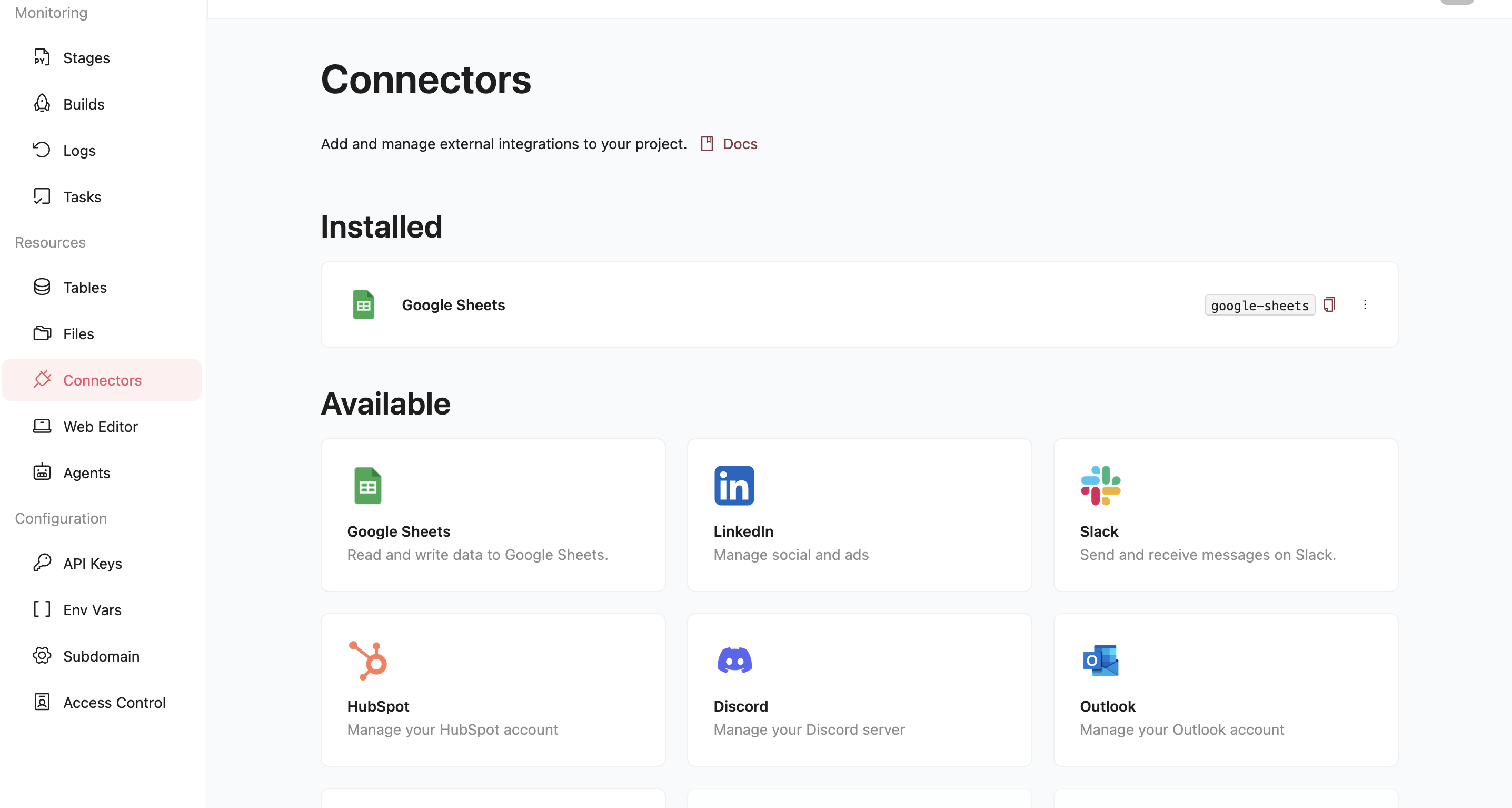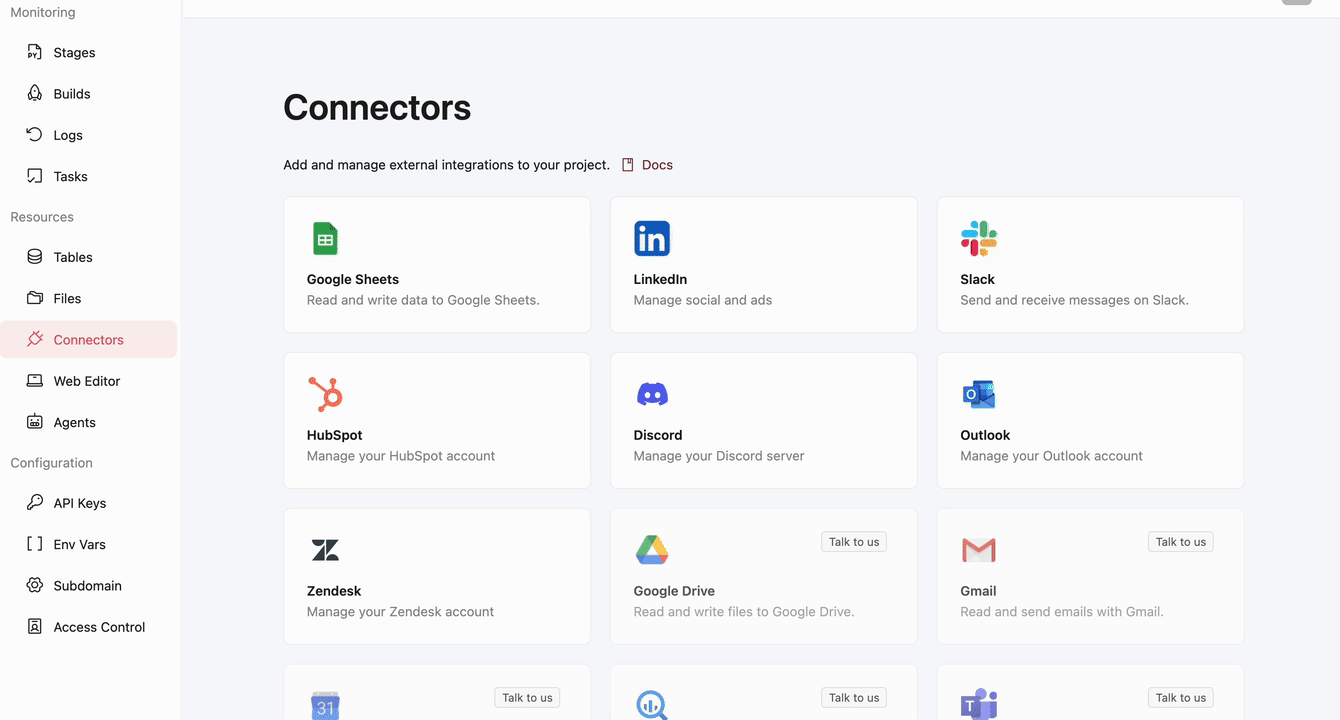Connectors
Connectors are an Abstra feature that allows you to add external services (such as ERP, CRMs, Google Calendar, Gmail, and more) to your workflows.
With connectors, you can enhance your workflows with actions such as:
- External Database queries: Fetch, insert, update, delete records from BigQuery, Databricks, and others;
- Chat integration: Send notifications via Discord, Slack, Teams, Gmail, Outlook, and others;
- CRM integration: Manage contacts, deals in HubSpot, NetSuite, Sankhya ERP, and others;
- ERP integration: Handle orders, inventory, accounting with Omie, Bling, and others;
- Banking integration: Operations with Banco do Brasil, Santander, Stripe, and others;
- Project management integration: Organize tasks using ClickUp, Todoist, Atlassian, and others.
You can visit Abstra Integrations to explore all available connectors and their respective actions for your integrations.
Some connectors are enabled upon request. If you need a connector that is not listed here, please contact us.

How to use Connectors
Setting up and using connectors is straightforward and requires only two main steps:
Step 1: Create the Connection in Abstra Console
First, you'll need to set up your connection in the Abstra Console.
Depending on the connector, you may need to create authentication keys, or uthorize the connection through OAuth. Each connector includes detailed instructions for setup and explains where to find the necessary keys or credentials.
Each connector requires its own separate connection. For example, if you connect to Google Sheets, you'll only be able to use that specific connector. To integrate with Google Drive, you'll need to create a separate connection for it as well.

Step 2: Use the integration in your workflow
Abstra provides two ways to develop your projects with connectors. You can either use AI assistance or code it yourself manually. Both approaches are equally effective choose the one you're most comfortable with.
Option A: Using AI Assistant
You can leverage Abstra's AI to generate connector code for you. Simply describe what you want to accomplish in natural language.
Example: Let's say you want to use the Databricks connector to query data from your data warehouse. You could use a prompt like:
Select the first 5 rows from table "customers" in catalog "production" and schema "sales" using the databricks-workspace connector
The AI will automatically generate the appropriate code and handle the connector integration for you.
Option B: Manual Coding
If you're comfortable with Python and prefer to build your workflows manually, you can code the connector integration directly in Abstra Editor. Here's the process:
- Import the connector method
- Define the connection name (created in Step 1)
- Specify the action (check available actions at Abstra Integrations)
- Set the required parameters
Example:
from abstra.connectors import run_connection_action
connection_name = "databricks-workspace"
action_name = "get_api_2.1_clusters_list"
params = {}
clusters = run_connection_action(connection_name, action_name, params)
print("Available clusters:")
print(clusters)
Best Practices
- Test your connections before using them in production workflows
- Handle errors gracefully by wrapping connector calls in try-catch blocks
- Check connector documentation for specific parameter requirements and response formats
- Keep credentials secure - never hardcode sensitive information in your scripts
Need Help?
- Browse available connectors and their actions at Abstra Integrations
- Contact our support team if you need a connector that's not currently available
- Check the connector-specific documentation for detailed setup instructions